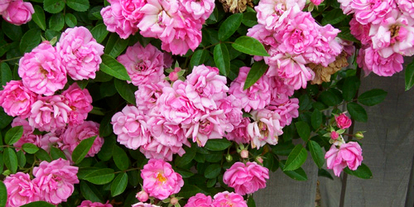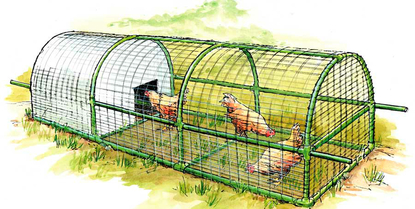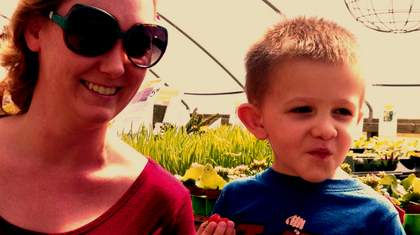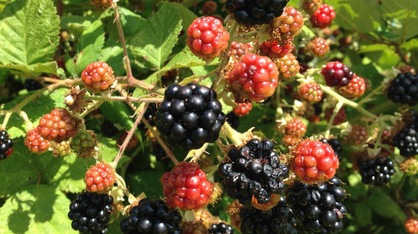I have a love/hate relationship with blackberries. Most of the other
berries that we grow in this area require lots and lots of additional
care, soil and hard work to yield an okay crop. But with blackberries,
if they're happy, they will gladly produce quarts of fruit with little
prodding, while quietly taking over your yard.
This is not a bad thing if you've prepared for it in advance, and pre-
paration is crucial if you want to be successful growing blackberries
here in central Texas.
First you need to decide the best place to grow them. I planted
mine up against a fence facing east and they seem happiest here.
Their thin leaves get at least some relief from the late afternoon
summer sun.
Most blackberries are very thorny and their new home should be
somewhere out of the way of traffic, kids and pets. There should
also be a water source to hit them with during dry spells so they
still produce when it’s not raining.
Next, clear all weeds and grass from the area because weeding un-
derneath them can be unpleasant once they start growing. Work
compost into the new bed and adding granite or green sand can be
good for heavy clay areas. If you have poor draining soil, you may
need to plant in a raised bed for best results.
While blackberry plants are perennials, their canes are considered
biennial. (These are flowering plants that take two years to com-
plete their biological lifecycle.)
During their first year they'll produce long canes of leaves called
prima canes. During their second year those same canes, now
called floricanes, produce flowers and fruit and then die. Then a
new crop of prima canes emerge from the roots ready for next
year’s fruit.
Blackberries are harvested in late spring/early summer and can be
eaten right away fresh or frozen for future use in desserts like cobb-
lers (best in my opinion) or for blended smoothies.
While the old standbys for Texas include Brazos and Rosborough,
there are also thornless varieties like Navajo and Arapaho that you
can plan when space is tight or thorned varieties are not an option.
While some say the fruit is not as tasty as the original sticky black-
berries, thornless do have their place.
Lastly, many of us in this region live where there are some wild
spots in the yard. Often those areas will be taken up by brambles
of dewberries, our wild blackberry native.
If you have the space to let them roam, as they want to be a ground-
cover as opposed to the upright canes of blackberries, this is a great
way to enjoy the fruits of Texas without much work. In drier years,
add a little moisture to keep them at their best production. Other-
wise, they need very little work.
Both the blackberry cultivars (thorned and thornless) and the Austin
dewberries can be found in the early spring in many nurseries, in-
cluding It's About Thyme, ready for you to begin your adventure in
blackberry farming. Happy gardening everyone! 🌿







 🌲 🌿 🌵
🌲 🌿 🌵